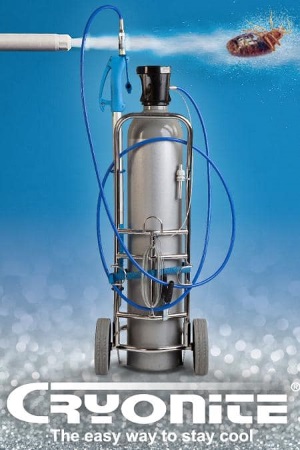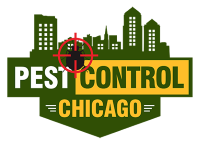Pest Control Chicago - Questions
Pest Control Chicago - Questions
Blog Article
An Unbiased View of Pest Control Chicago
Table of ContentsOur Pest Control Chicago DiariesMore About Pest Control ChicagoFacts About Pest Control Chicago UncoveredFacts About Pest Control Chicago RevealedThe Definitive Guide for Pest Control ChicagoThe Pest Control Chicago Diaries
Growing or collecting a plant prior to (or after) a bug is existing minimizes bug damage by avoidance. Trapping and calculating an insect's expanding level days can aid with preparing around an insect's lifecycle. Damage tolerance can in some cases be accomplished by planting a plant early to make sure that the plants are more powerful, much more resistant, and more forgiving to damages by the time insect bugs exist.
By developing a tiny, controlled space that the parasites favor, it is feasible to divert pests far from the main crop. 2 methods for this are trap chopping and strip harvesting. is planting a recommended host plant of an insect bug near the primary plant that is to be secured.
If required, the parasites can after that be killed in the catch crop. Catch crops can be any kind of types that the pest preferseven coincide types as the primary plant - Eco-friendly pest control Chicago. If the trap plant coincides varieties as the main plant, it should be grown at a time that will best tempt the insect far from the primary crop
How Pest Control Chicago can Save You Time, Stress, and Money.
 This practice is useful when harvesting a catch plant since it preserves some habitat for the pest. Therefore, the parasite does stagnate to discover new environment in a surrounding greater value or more at risk plant. https://pstc0ntrlchg.creator-spring.com. The strategies already pointed out focus on minimizing plant exposure to insect bugs, yet it is also feasible to lower yield loss even when insect damages happens
This practice is useful when harvesting a catch plant since it preserves some habitat for the pest. Therefore, the parasite does stagnate to discover new environment in a surrounding greater value or more at risk plant. https://pstc0ntrlchg.creator-spring.com. The strategies already pointed out focus on minimizing plant exposure to insect bugs, yet it is also feasible to lower yield loss even when insect damages happensTo practice IPM in the landscape, select plants that are well matched to the site. Plant them appropriately and maintain the plants healthy by very carefully sprinkling, feeding, and pruning them. Look out for troubles on your plants as they emerge. If an insect or condition creates unacceptable damage in spite of preventative initiatives, pick a reliable management method that will have the least amount of effect on various other living animals and the setting.
The 7-Minute Rule for Pest Control Chicago
 Search for signs the plant exhibits as a result of parasite activity. Analyze your plants frequently. Recognize your plants to be certain that the twisted leaves, unusual pigmentation, or strange-looking structures you see are not a typical component of the plant. Attempt to rule out site-related issues by ensuring that the dirt type, drain problems, fertility degree, and various other environmental conditions are desirable for the plant.
Search for signs the plant exhibits as a result of parasite activity. Analyze your plants frequently. Recognize your plants to be certain that the twisted leaves, unusual pigmentation, or strange-looking structures you see are not a typical component of the plant. Attempt to rule out site-related issues by ensuring that the dirt type, drain problems, fertility degree, and various other environmental conditions are desirable for the plant.Insects and mites often are associated with specific plants, and they adhere to particular growth and habits patterns as the season progresses. Usage referral publications from the library or garden facility to determine insects (Insect control services Chicago).
If so, an application of a nonselective insecticide could eliminate them, enabling the pest population to rebound spontaneous by predators and parasites, which might have been offering significant control. If a control is required, take into consideration physical or biorational techniques first. If they are not available or impractical, you might need to carefully make use of a conventional chemical control.
The Ultimate Guide To Pest Control Chicago
 Some aphids and termites can be knocked off by splashing the plant with water. Bagworm larvae can be selected off a ravaged plant. You can make use of catches to capture specific bugs, and barriers to safeguard plants from insect attack or disease infection. One effective method for controlling gypsy moth larvae on tiny numbers of trees is to place a band of folded up burlap around the tree trunk to offer a synthetic resting website for the caterpillars, and afterwards destroy the caterpillars that collect there.
Some aphids and termites can be knocked off by splashing the plant with water. Bagworm larvae can be selected off a ravaged plant. You can make use of catches to capture specific bugs, and barriers to safeguard plants from insect attack or disease infection. One effective method for controlling gypsy moth larvae on tiny numbers of trees is to place a band of folded up burlap around the tree trunk to offer a synthetic resting website for the caterpillars, and afterwards destroy the caterpillars that collect there.Sometimes, the most effective service may be literally eliminating the plant and replacing it with one that will certainly not be impacted by the insect or disease. Thinning jampacked plants to enhance air circulation can lower lots of disease troubles. Biorational techniques can be divided right into two teams. The very first team consists of living organisms that can eliminate the pest.
Parasites live on and commonly kill one more organism, called the host. Some parasitic wasps make use of caterpillars, whiteflies, aphids, and soft scales as hosts. An instance of an approach that utilizes a normally occurring biochemical is the germs Bacillus thuringiensis (Bt). Bt contains a protein that is dangerous to specific bugs, yet safe to other organisms.
The Facts About Pest Control Chicago Uncovered
When the delicate bug parasite preys on the splashed fallen leaves, it will certainly consume the protein and be killed. Conventional chemicals are used only as a last hope in an IPM program, yet sometimes are one of the most reliable methods of control. To have the best impact, these products need to be applied on a specific component of the plant when the parasite is most at risk.
In several situations, ecologically risk-free chemicals such as horticultural oil or insecticidal soap work choices - https://www.easel.ly/create/design?id=https://s3.amazonaws.com/easel.ly/all_easels/7228624/pstc0ntrlchg&key=pri. Once more, applications need to be timed thoroughly to have the best impact on the parasite insect population. Due to the fact that they have no residual task after they have dried out, soaps and oils are usually the choice that is the least turbulent to populations of useful microorganisms
These words, from least hazardous to most toxic are: "caution," "caution," and "threat." Use these words as guidelines to assist you pick the least hazardous material amongst the reliable alternatives. For many landscape bugs, you require to consider pesticides in only the very first 2 groups. Some chemical formulations can be applied only by applicators with special training and his explanation who are accredited by the state's division of farming.
The 8-Minute Rule for Pest Control Chicago
Refer to the Woody Ornamental Insect, Mite, and Condition Monitoring Guide, published by Penn State Expansion, or to one more present reference for a checklist of products that are registered for usage on plants in your state. Check out the label to make sure that you have actually selected a product that works versus the pest you have actually determined, and select your timing based upon expert recommendations.
Report this page